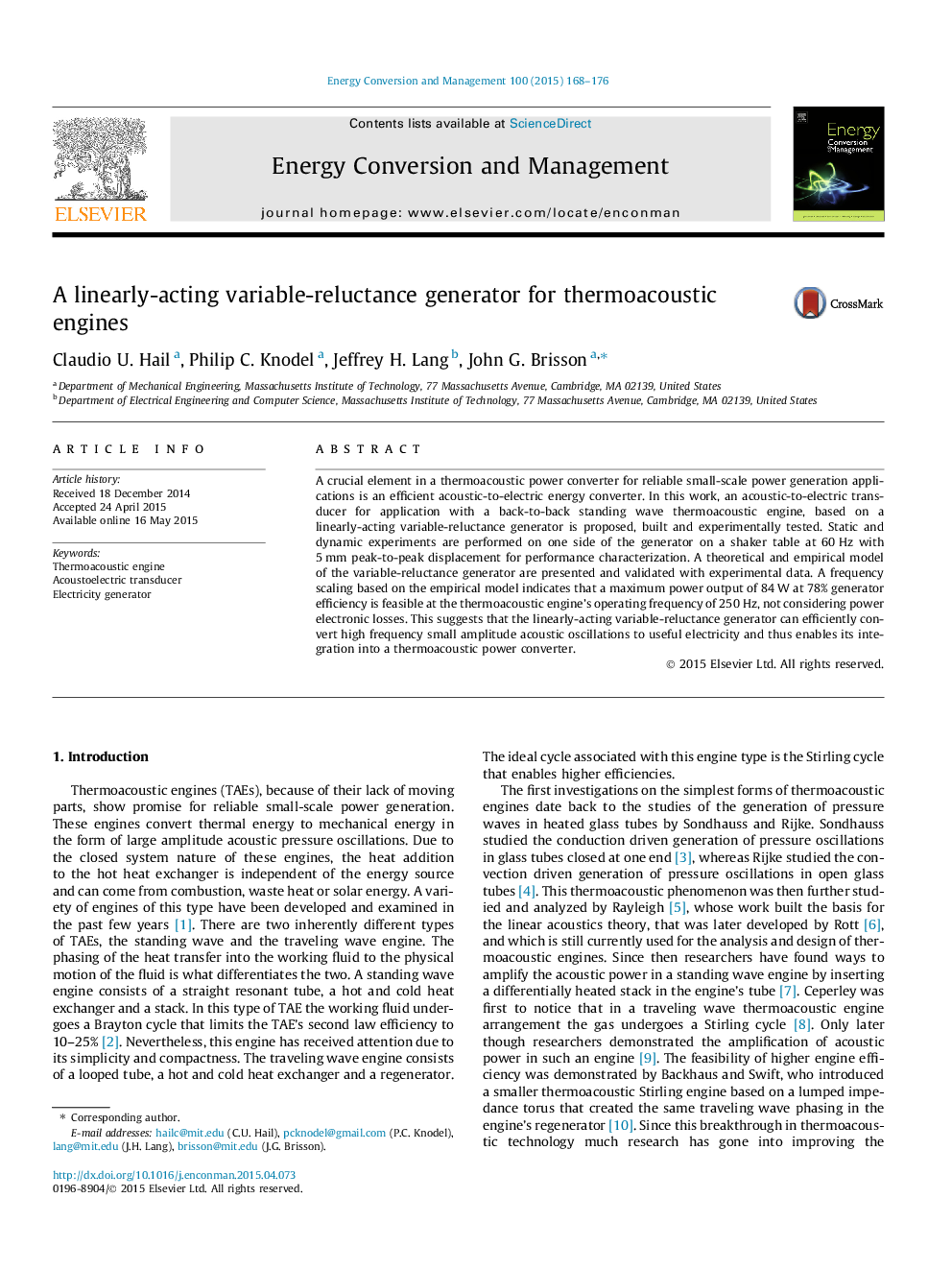| Article ID | Journal | Published Year | Pages | File Type |
|---|---|---|---|---|
| 763726 | Energy Conversion and Management | 2015 | 9 Pages |
•A new design for a linear alternator for thermoacoustic power converters is presented.•A theoretical and semi-empirical model of the generator is developed and validated.•The variable-reluctance generator’s performance is experimentally characterized.•Scaling to higher frequency suggests efficient operation with thermoacoustic engines.
A crucial element in a thermoacoustic power converter for reliable small-scale power generation applications is an efficient acoustic-to-electric energy converter. In this work, an acoustic-to-electric transducer for application with a back-to-back standing wave thermoacoustic engine, based on a linearly-acting variable-reluctance generator is proposed, built and experimentally tested. Static and dynamic experiments are performed on one side of the generator on a shaker table at 60 Hz with 5 mm peak-to-peak displacement for performance characterization. A theoretical and empirical model of the variable-reluctance generator are presented and validated with experimental data. A frequency scaling based on the empirical model indicates that a maximum power output of 84 W at 78% generator efficiency is feasible at the thermoacoustic engine’s operating frequency of 250 Hz, not considering power electronic losses. This suggests that the linearly-acting variable-reluctance generator can efficiently convert high frequency small amplitude acoustic oscillations to useful electricity and thus enables its integration into a thermoacoustic power converter.
